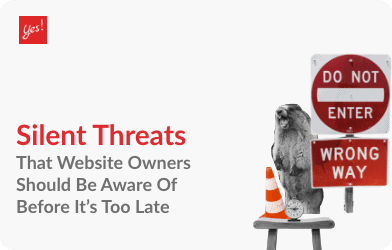
Some of the reasons why website owners don’t bolster their online security to protect their blogs and websites from attackers, are usually because.
– They don’t believe their website or blog has anything worth of real value to attackers
– They don’t believe that they ever will be attacked regardless
– Hackers pray on these mindsets. Failing to take basic steps to protect your websites against attackers means that you as well as your customers are at serious risk harm to your website and business.
– To help ensure that this never happens to you, we’re going to talk about the three most simple ways that you can take to protect your website from attackers right now.
While taking these steps won’t guarantee that your website or blog will never be broken into, it will at the very least significantly decrease the risk of it ever happening:
1. Install A Security Socket Layer
The most popular and effective way to add a security socket layer (SSL) to your website will be to use HTTPS, which is a protocol that allows you to send secure communication over your computer network, and ensures that no intruders will be able to tap into your content. This means that you will be able to browse your website securely while submitting your financial information or login details.
For this reason, you’ll always want to use HTTPS on your website pages where users will be submitting their sensitive information, such as login details or credit card information. Otherwise, if an attacker steals it, they’ll be able to imitate the user.
Furthermore, enabling HTTPS will also help make your website more visible on search engines, as Google will boost websites in the search engine rankings that use HTTPS.
2. Shield Your Website Against SQL Injection
An SQL Injection attack is when an attacker uses a URL parameter to manipulate your database and to gain access to your site.
You are also at serious risk of becoming a victim of an SQL Injection attack if you are currently utilizing a standard Transact SQL, because it’s very easy for an attacker to type in a rogue code into your query to gain access to your data and information.
To stop this from happening to you, you need to set rules query, which is so simple to do
3. Don’t Allow File Uploads
You’re always putting yourself major risk by allowing file uploads to your website. Obvious right? A lot of people are still not wary of this. No matter how innocuous the uploaded file may seem, it could contain a script that opens up your website to attackers.
Even allowing users to upload an image can be a security risk. If you have a form that allows file uploads, then you need to treat every uploaded file with suspicion. You can’t trust the file extension to verify that the file uploaded indeed an image because the that can be faked. Any image formats, for instance, allow a comment section to be stored that could contain malicious PHP code.
The best solution here is to stop direct access to any uploaded files to your website. When this occurs, any files that are uploaded to your website will be stored in an external folder. You can then create a script to find those files in the private folder before delivering them to your browser. Stay safe!
For more useful content visit us at yeswebdesignstudio.com









